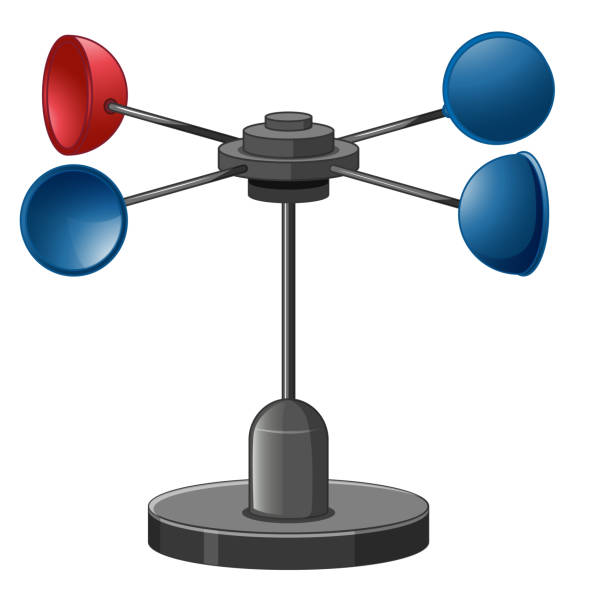How an Anemometer Can Boost Your Weather Tracking System
How an Anemometer Can Boost Your Weather Tracking System
Blog Article
All You Need to Know Regarding Anemometers: Exactly How They Function, Why They Matter, and Where to Make use of Them
Anemometers, though usually ignored in the world of clinical tools, play an important duty in different areas, supplying useful insights into wind speed and airflow patterns. As we dig into the intricacies of anemometer innovation, we will certainly discover the internal operations of these gadgets, their relevance, and the essential factors to consider when choosing the right anemometer for particular applications.

Anemometer Basics
An important instrument made use of to measure wind speed and instructions, the anemometer plays a critical role in weather forecasting and various markets. An anemometer normally is composed of three or four mugs that turn in the wind, a vane that aims right into the wind, and sensors to track the rotations or activities.
There are various sorts of anemometers offered, consisting of cup anemometers, vane anemometers, hot-wire anemometers, and sonic anemometers, each with its distinct attributes and applications. Cup anemometers are frequently used for basic wind rate dimensions, while vane anemometers are chosen for directional measurements. Hot-wire anemometers appropriate for low airspeeds, and sonic anemometers are excellent for high-precision dimensions in research and industrial settings. Understanding the fundamentals of anemometers is necessary for exact wind data collection and analysis across various fields.
Concepts of Anemometer Operation
Structure on the foundational understanding of anemometer basics, the concepts of anemometer operation illuminate the technicians behind wind rate and instructions dimensions. Cup anemometers, for instance, have three or more mugs that record the wind, triggering them to spin faster as the wind rate increases. Hot-wire anemometers depend on a heated cord that cools down as wind passes over it, with the rate of cooling identifying the wind rate.
Significance of Anemometers
Anemometers play a crucial duty in determining wind rate and instructions, supplying essential information for weather forecasting, climate researches, ecological tracking, and air travel operations. Meteorologists rely on anemometers to collect precise wind information, helping them comprehend climate patterns, forecast tornados, and problem timely warnings to the public. Wind farm drivers utilize anemometers to analyze wind problems and make best use of electrical power production from wind turbines.
Applications Throughout Various Industries
In the sustainable power field, anemometers play an essential function in assessing wind conditions for wind ranch placements, guaranteeing optimum power production. Industries like building and construction and mining make use of anemometers to check wind rates, vital for safety and security methods, specifically when functioning at heights or in open-pit mines where strong winds can posture threats. In agriculture, anemometers assist farmers in handling crop spraying by supplying real-time data on wind rate to stay clear of discover this info here drift.

Picking the Right Anemometer for Your Requirements
Choosing the suitable anemometer tailored to your particular needs is vital for acquiring accurate wind rate and instructions dimensions. When choosing an anemometer, consider elements such as the desired application, needed dimension range, environmental conditions, and preferred functions. For basic purposes, a cup anemometer appropriates for measuring wind speed, while a vane anemometer supplies wind direction information. Hot-wire anemometers are perfect for low airspeed measurements, and ultrasonic anemometers use high precision and durability.

Final Thought
In conclusion, anemometers play an essential function in measuring wind speed and instructions across various sectors. It is essential to think about the relevance of anemometers in order to make educated decisions when selecting the most appropriate device for gauging wind problems.
There are numerous kinds of anemometers available, including mug anemometers, vane anemometers, hot-wire anemometers, and sonic anemometers, each with its distinct functions and applications. Mug anemometers are generally made use of for standard wind rate measurements, while vane anemometers are liked for directional measurements. Hot-wire anemometers are suitable for reduced airspeeds, and sonic anemometers are perfect for high-precision dimensions in research and commercial settings.Structure on the fundamental understanding of anemometer fundamentals, the concepts of anemometer procedure elucidate the mechanics behind wind rate and direction measurements. For basic look at this website purposes, a mug anemometer is suitable for measuring wind speed, while a vane anemometer gives wind instructions information.
Report this page